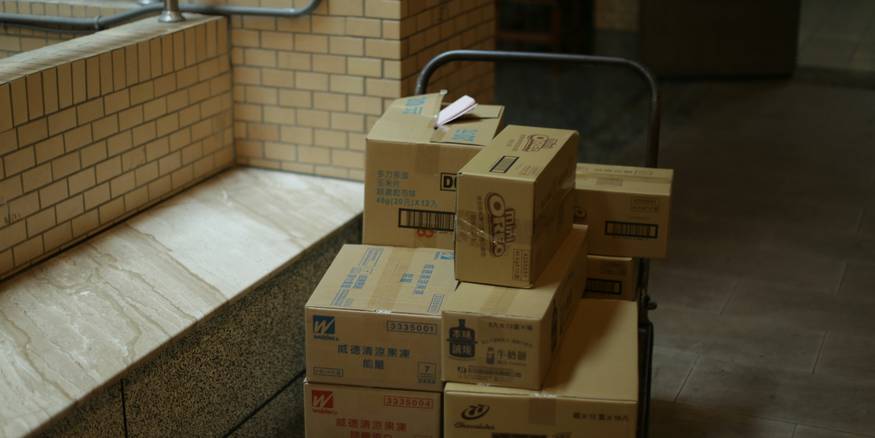Move-In Checklist Generator
Create a personalized, printable move-in checklist in under five minutes. Add rooms, drag tasks, and export a PDF or shareable list—perfect for apartments, dorms, or whole houses.

Create a personalized, printable move-in checklist in under five minutes. Add rooms, drag tasks, and export a PDF or shareable list—perfect for apartments, dorms, or whole houses.

Step 1: Click “Add Room,” type a name (Kitchen, Bedroom 1, Basement), and hit OK.
Step 2: For each room, add specific tasks—“Photograph appliance serial numbers” or “Test outlet with phone charger.”
Step 3: Drag tasks to reorder. The list autosaves in your browser, so accidental refreshes won’t erase your work.
Step 4: When finished, click “Print / Save PDF” to open your system print dialog or “Copy to Clipboard” to paste the list into email, Google Docs, or group chat.
Step 5: On mobile, tap your browser menu and choose “Add to Home Screen” to reopen the checklist like an app throughout move-in week.
A customizable list lets you think like an inspector. For the kitchen, check stove burners, verify fridge temperature, and document countertop chips. In bathrooms, photograph grout and run the fan for noise levels. Living rooms need outlet tests and smoke-alarm checks. For a deeper predefined list, open our comprehensive checklist guide or brush up on privacy rights before installing smart cameras.
Locate the main water shut-off valve, breaker panel, and gas meter on day one. Flip each breaker to verify labeling accuracy; mis-labels can slow emergency repairs. Confirm heat, A/C, and water heater function within 24 hours so you have time to request repairs. For utility-responsibility rules, see our utility responsibilities guide.
Michigan’s Security Deposit Act gives tenants seven days to return the landlord’s blank inventory checklist. Use this generator to fill that form faster, then attach timestamped photos. Courts love organized tenants: judges routinely side with renters who can produce a PDF of signed checklists, emailed within the statutory window. Review our full security deposit guide for final-day refund timelines.
The first 12 hours in a new place set the tone. Pack a clear tote with trash bags, toilet paper, box cutter, phone charger, basic toolkit, cleaning wipes, snacks, bottled water, and sleeping gear. Avoid late-night store runs that derail unpacking momentum. We’ll soon expand this into a renter’s insurance guide so your essentials are covered from hour one.
| Item | Why It Matters |
|---|---|
| AAA Batteries | Smoke alarms chirp at 2 a.m. without fresh ones. |
| Plunger | Clogs on day one create embarrassing maintenance calls. |
| Measuring Tape | Ensures furniture fits without wall dents. |
| Power Strip | Avoids overloading hidden wall outlets. |
| Doorstop | Keeps doors open while moving bulky items. |
| Zip-Top Bags | Store mounting screws and tiny parts you remove. |
| Painter’s Tape | Label boxes and mark wall art placement. |
| Flashlight | Inspect dark crawl spaces and breaker panel. |
| Vacuum Bags | New floors collect debris fast during move-in. |
| Extra Phone Charger | One always disappears under packing paper. |
Twenty years ago the gold standard for documenting move-in condition was a yellow carbon-copy form and a disposable camera. Today, smartphones have flipped the script. A digital checklist lives in the cloud, so you never misplace it during the chaos of unpacking. Photos embed geo-location and time stamps—metadata that courts view as more trustworthy than handwritten notes. You can also attach video walkthroughs, appliance manuals, and receipts in one folder and share a read-only link with your landlord in seconds.
Paper still has its place. Some property managers insist on ink signatures for their files, and older judges appreciate tangible exhibits they can flip through. A hybrid approach works best: generate the list online, print a copy for in-person signatures, then scan it back into your cloud folder. That gives you the speed of digital plus the familiarity of paper. Whichever route you choose, keep at least two backups—one in email and one in a cloud drive—to guard against phone loss or hard-drive failure.
Avoid these pitfalls and your future self—standing in small-claims court or negotiating a renewal—will thank you.
Michigan landlords must provide a blank inventory checklist at move-in; most are generic two-page documents with checkboxes for walls, floors, and appliances. While legally sufficient, these forms fail to capture quirks like a loose patio rail or a stained dresser top in furnished units. A custom list generated by this tool lets you add unlimited items—each with its own photo and comment field—so nothing slips through the cracks.
Still, an inventory form carries statutory weight. Judges recognize it instantly, and landlords are accustomed to its format. The winning strategy: fill out the landlord’s form and attach your custom list as an exhibit. Below is a quick comparison.
| Feature | Inventory Form | Custom List |
|---|---|---|
| Statutory Recognition | High | Medium |
| Detail Level | Basic | Unlimited |
| Photo Integration | No | Yes |
| Ease of Sharing | Paper Hand-off | Link or PDF Email |
| Judge Familiarity | High | Growing |
This generator offers general guidance, not legal advice. Consult a qualified attorney for advice on your specific situation.